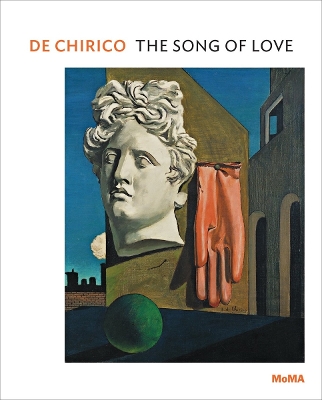MoMA One on One
1 total work
The unexpected encounter of a rubber glove, a green ball and the head from the classical statue of the Apollo Belvedere gives rise to one of the most compelling paintings in the history of modernist art: Giorgio de Chirico's "The Song of Love" (1914). De Chirico made his career in Paris in the years before World War I, combining his nostalgia for ancient Mediterranean culture with his fascination for the curios found in Parisian shop windows. Beloved by the Surrealists, this uncanny image exemplifies de Chirico's radical "metaphysical" painting, which creates a disturbing sense of unreality, outside logical space and time, through the novel depiction of ordinary things. Emily Braun's essay explores the sources behind the work's enigmatic motifs, its influence on avant-garde painters and poets, and its continuing ability to captivate viewers as de Chirico intended, even a century after it was made.
